The Secret Fitness Trick for Walking Better Starting Now, Say Experts
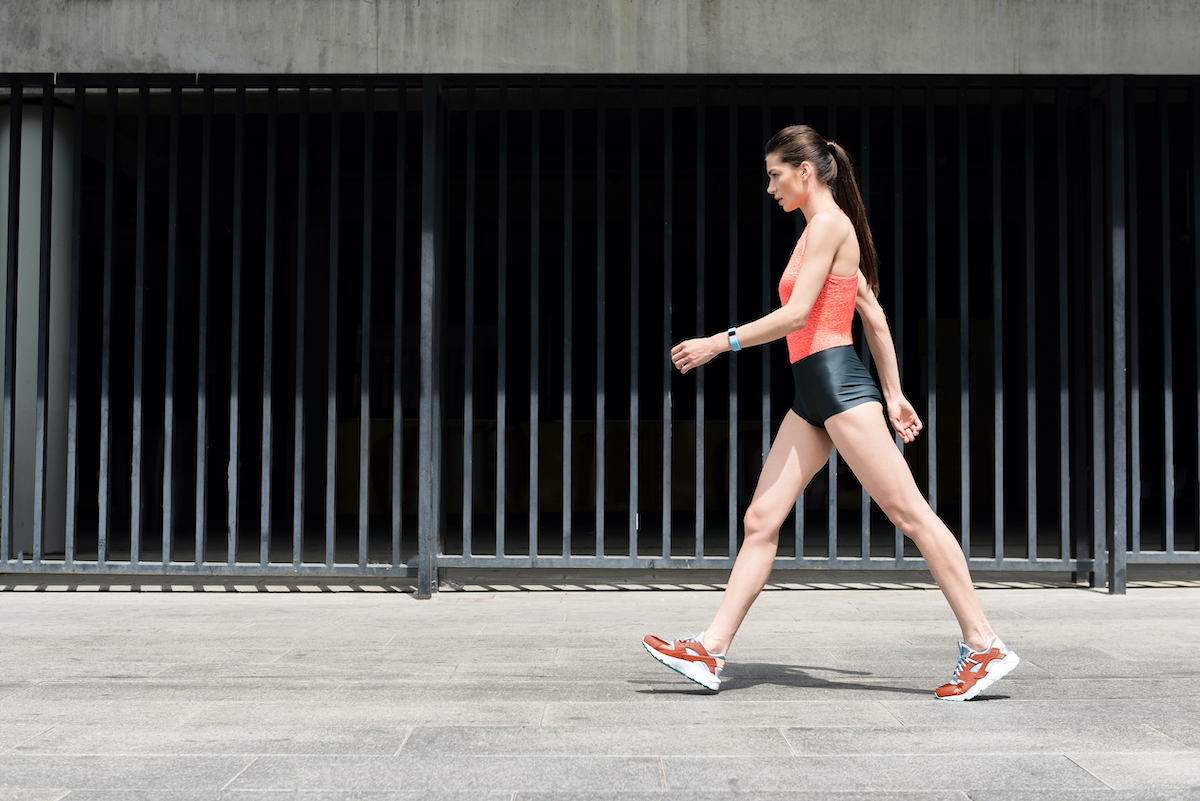
When you think of cross-training, things like HIIT and marathon running come to mind, not walking. But if you walk for exercise, incorporating some strength training into your routine will indeed make you a better, faster, and more efficient walker. You’ll go farther and have better form. According to the top trainers we spoke to, there is one fitness move that stands apart for its effectiveness in making you a better walker: Planking.
“Planks give you so much bang for your exercise buck,” says Lisa Herrington, an ACSM-certified trainer and founder of FIT House Davis. Not only do they work your core muscles, but they also require every muscle group of the body to work together, she says—including your core muscles, triceps, quads, glutes, and hamstrings.
Mastering the plank can help you get even more benefits from your walking workout. For one thing, planks really help with posture and alignment by strengthening all of your muscle groups, Herrington says. “You want to make sure that your body [while walking] is in alignment and that you have proper form to prevent injury, and planks can help with that,” she says. For example, having a stronger core takes pressure off of your lower back while walking—making you less prone to soreness and pain in that area.
Planks also engage and strengthen the pelvic floor, aka the group of muscles at the base of your pelvis that control bowel and bladder function, says Erica Ziel, a certified personal trainer and Pilates instructor. Standing exercises like walking can put pressure on the pelvic floor (thanks, gravity), she says, so strengthening these muscles can support better health, such as improved continence and less painful sex.
Herrington says you can (and should) do planks every single day. Aim to be able to hold one for up to 60 seconds at a time if you’re a beginner. “Set a timer to see how long you can hold a plank,” she recommends. The moment you start to droop down or feel excessive strain on your body parts, stop that timer. “A goal would be to add an additional 10 seconds to your time [with good form],” she recommends.
You can also break up your daily minute of planks over the course of the day, especially if you struggle to keep it up for the full 60 seconds. Start with 20 seconds in the morning, Herrington says, then do another 20 after lunch and another 20 in the evening.
Haven’t planked in a while? Here’s how to do it right, plus some variations to help you hit your walking workout goals in stride. And if you love walking, make sure you know about The Secret Cult Walking Shoe That Doctors and Nurses Are Obsessed With.
The traditional plank
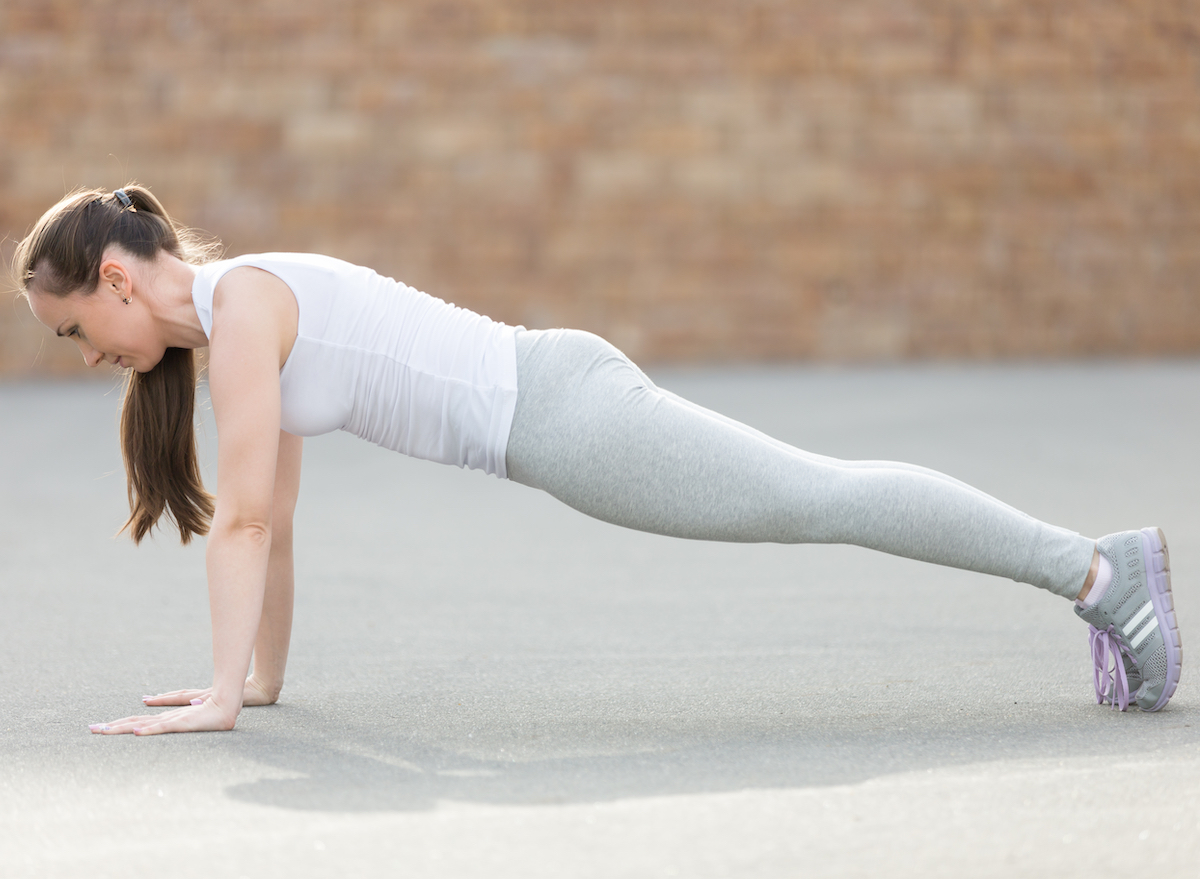
Start by planting your hands directly underneath your shoulders on the floor like you’re doing a push-up, says Herrington. Curl your toes under and press into the floor, lifting your knees off of the ground and straightening your legs. Your head and neck should be aligned with your back. “There should be a straight line from the back of your head through the tailbone and down to the ankles,” she says. Tuck your hips under slightly to avoid a sway back, and squeeze your glutes to stabilize yourself. Hold for as long as you can, up to 60 to 90 seconds. And for more on walking better, don’t miss these Secrets for Walking Your Way to a Longer Life.
Modification: Knees on the floor
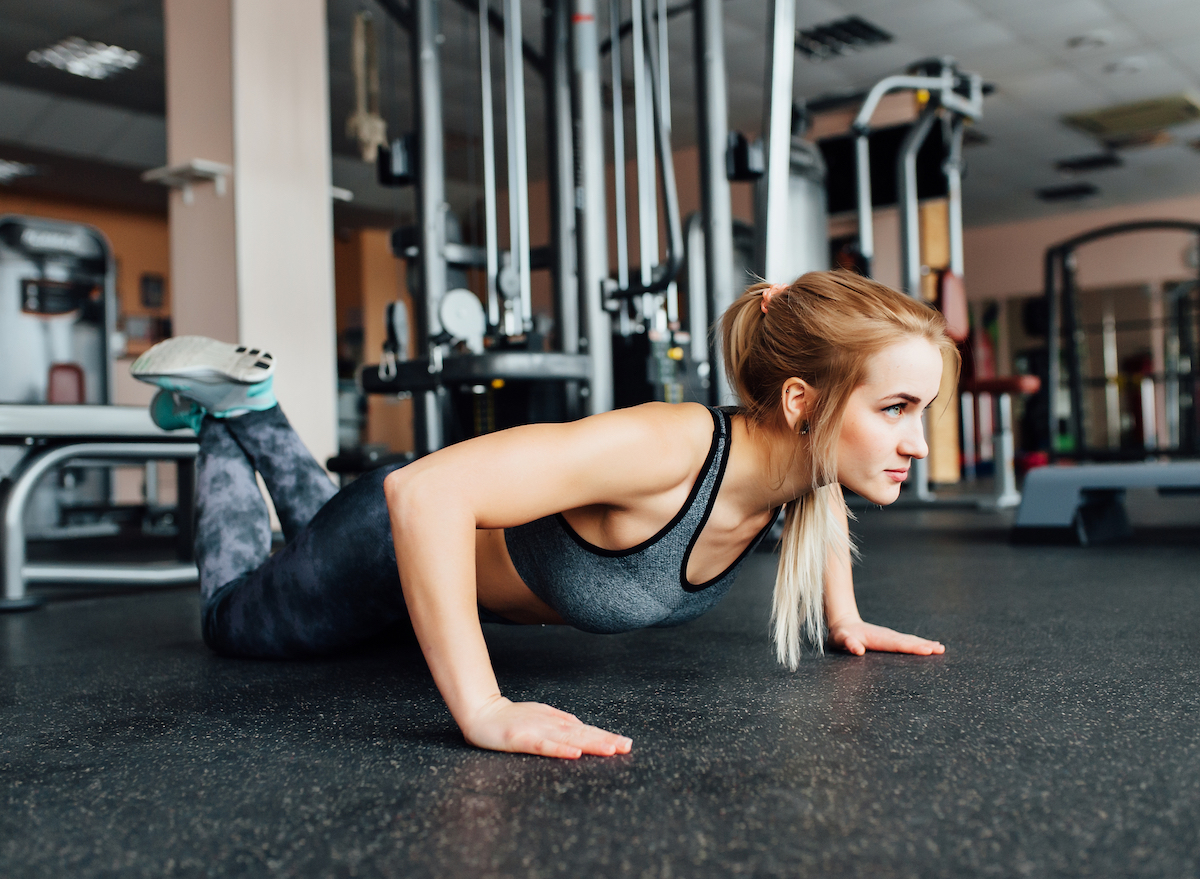
This position is a bit gentler on folks who don’t quite have the core strength yet to rock the full-on plank. But don’t feel down about needing a modification, Ziel says. “Sometimes we get this in our brain that [an exercise] has to be really hard to be really effective,” she says. “But many times if we actually modify it a bit, we’re going to feel it more in the right places.” It’s better to do a modification rather than do the “original” move and risk back strain or other injury.
To do this modification, Herrington says you should start in a classic plank position, except with your knees on the ground. Maintain that alignment from your head down through your tailbone. Press the tops of your feet into the ground for added resistance. (For more intel on age- and ability-appropriate exercises, check out Over 60? Never Do These Exercises, Says Trainer.)
Modification: Wall plank
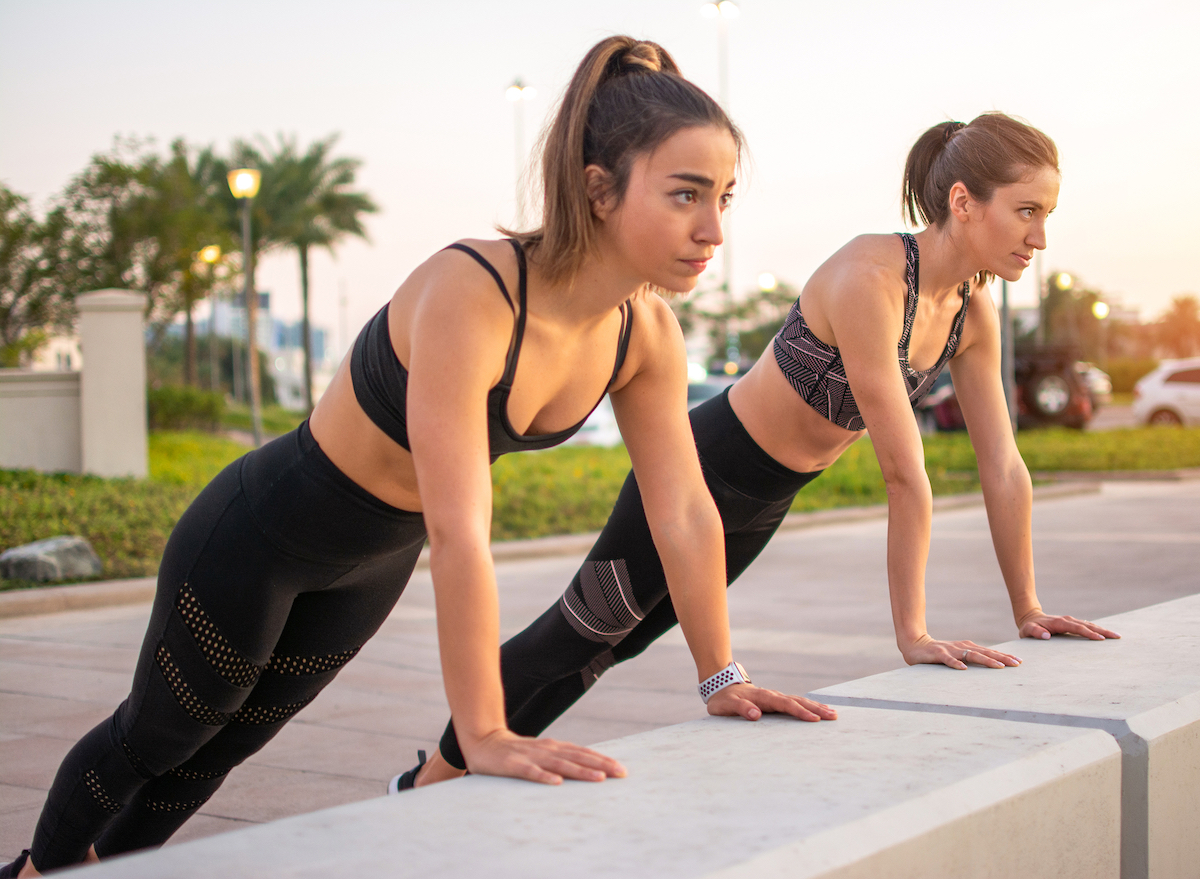
If you have shoulder or wrist issues, Herrington recommends taking your plank to an upright position. Put your hands on the wall and walk your feet away from the wall, she says, until you’re standing at an angle away from the wall. Your body should still be a straight line from your head through your spine. (You can also use a bench or a counter, adds Ziel.)
Modification: Plank slides
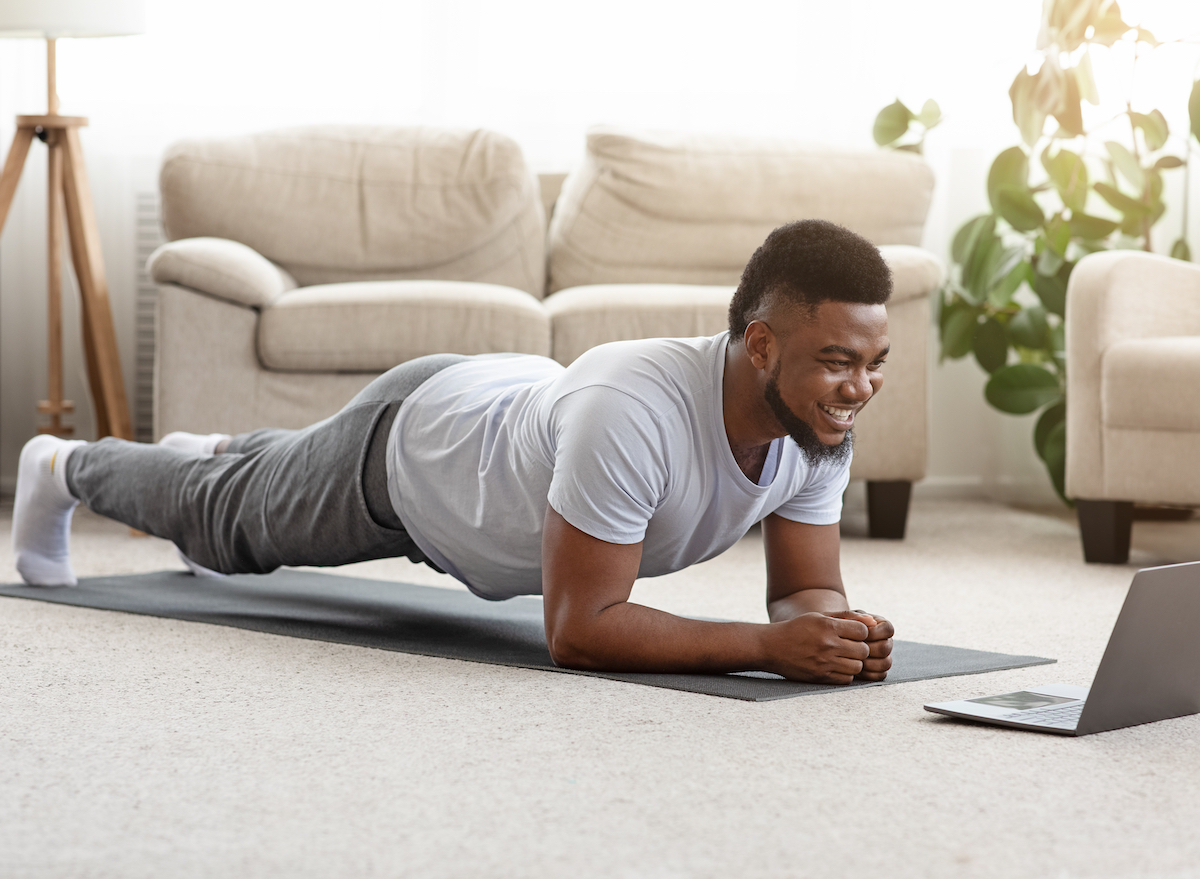
Ziel is not a fan of static planks. She says she prefers to add a bit of movement to planks for more muscle activation. “Start in a modified plank position,” she says—such as leaning against a wall or countertop—then lift your heels slowly. On the inhale, move your heels back towards the ground, then exhale and lift. Repeat for the duration of the plank. (She calls this move a plank slide.)
Another option from Herrington: In the standard plank position, slightly bend the knees and then slowly lift them up again. “What that helps do is activate the quads, which we use a lot when we’re walking,” she says. Repeat the motion for the duration of the plank. (Want more workout tips? Be sure to read The 7 Most Underrated Exercises You’ve Never Tried.)








